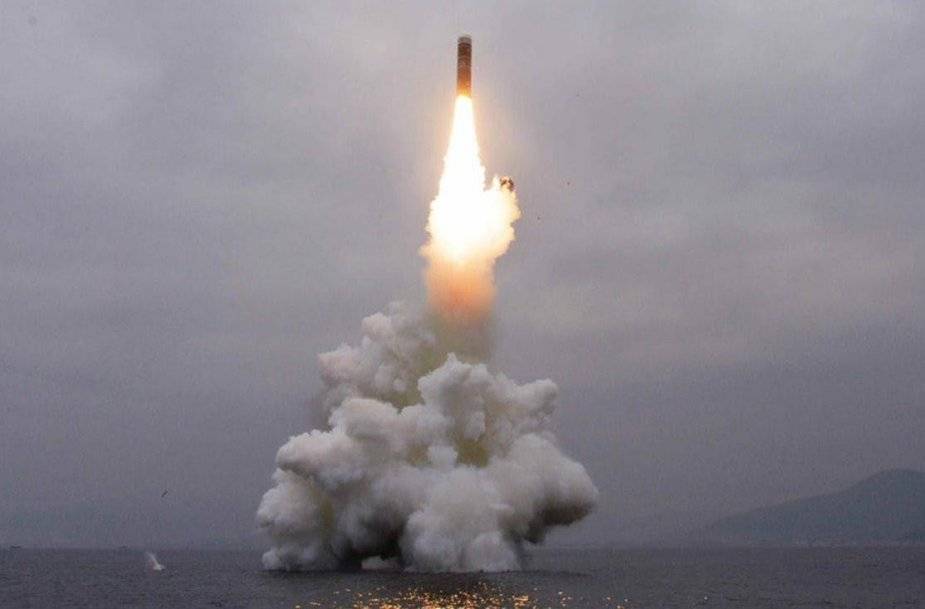According to information published by the NK News organization on November 3, 2020, North Korea has launched the construction of two new types of submarines (SLBM) able to launch ballistic missiles.
Follow Navy Recognition on Google News at this link
 On October 2, 2019, North Korea conducted an underwater launch of its new Pukguksong-3 submarine-launched ballistic missile (SLBM) off the coast of Wonsan. (Picture source 38 North Website / Rodong Sinmun)
On October 2, 2019, North Korea conducted an underwater launch of its new Pukguksong-3 submarine-launched ballistic missile (SLBM) off the coast of Wonsan. (Picture source 38 North Website / Rodong Sinmun)
A submarine-launched ballistic missile (SLBM) is a ballistic missile capable of being launched from submarines. Modern variants usually deliver multiple independently targetable reentry vehicles (MIRVs) each of which carries a nuclear warhead and allows a single launched missile to strike several targets. Submarine-launched ballistic missiles operate in a different way from submarine-launched cruise missiles.
The two new North Korean submarines could be a modified Soviet-made Romeo-class diesel/electric submarine also known as Sinpo-C that was revealed on North Korean TV on July 2019 and a new North Korean design submarine. According to open-source information, submerged displacement of the Sinpo-C will be from 1,650 to 2,000 tons with a length of 65 m and an estimated beam measurement of 6.5 meters.
The Sinpo-C could be armed with Pukkuksong-1 KN-11 or Pukguksong-3 (KN-26) submarine-launched ballistic missiles (SLBM) which has an estimated range of 1,900 km. North Korea first tested the Pukguksong-3 on October 2, 2019.
According to a U.S. report, North Korea has 40 SANG-O 37-meter Class special operations midget submarines, 33 YUGO 20-meter Class special operations midget submarines, and ten YONO 29-meter submarines. The KPN also can deploy 20 Romeo-class attack submarines against surface ships.
Citing the U.S. report, North Korea’s possession of nuclear weapons and the missiles to transport it up to 9,650 km makes it a threat to US forces stationed in Korea, Japan, Alaska, or even the west coast of the continental United States. Even more concerning was the DPRK’s first successful test launch of a KN-11 missile from a submarine on 23 January 2015 since, in the near future, the North Korean submarines could silently move closer to their targets before launching a nuclear missile that would give the US less warning time.



